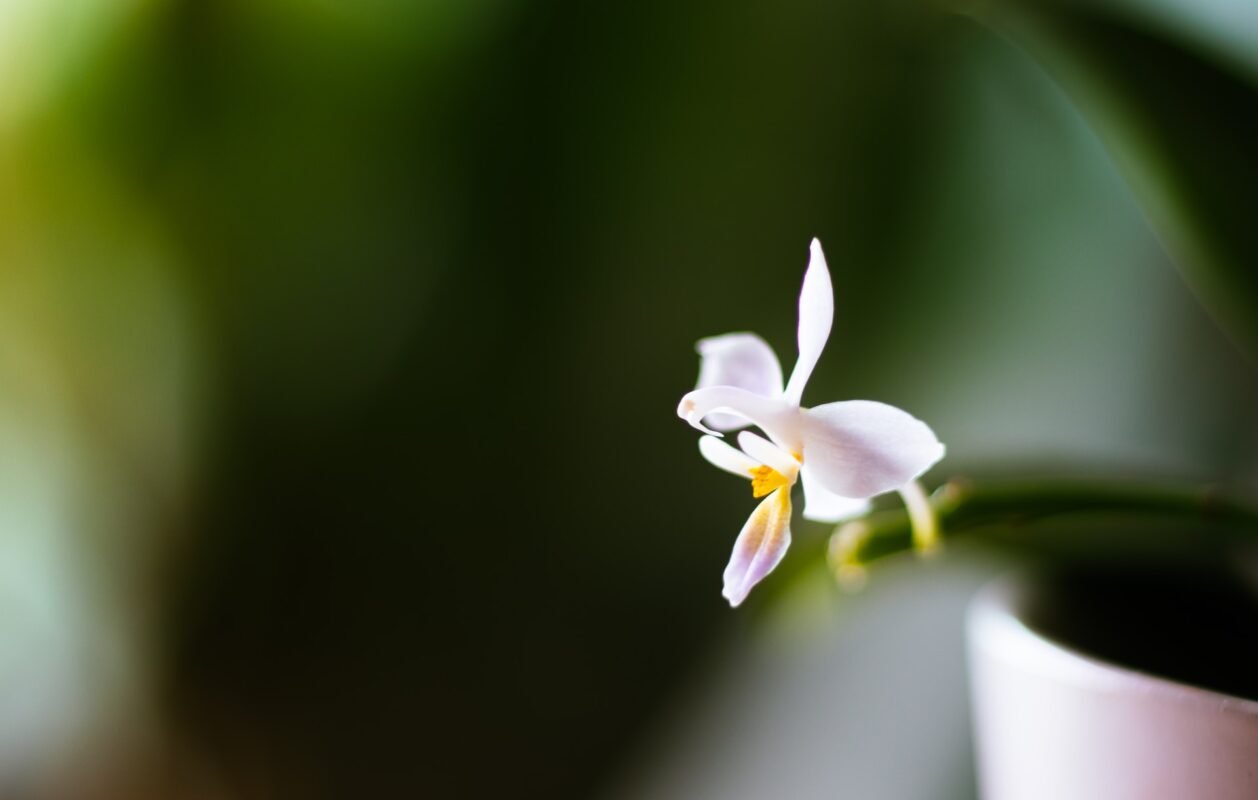Find out the possible reasons

It often happens that you have a plant that does not bloom and you do not understand what is the reason. Below is a handy chart that will help you find out what’s the problem.
- Wrong period
- Lack of light/dark alternation
- Insufficient day/night temperature excursion
- Inadequate irrigation and humidity
- Lack or wrong use of fertilizers
- Unsuitable soil or pot
Wrong period
Orchids bloom between December and April. If this is not the right season, don’t worry, your orchid is just resting! Blossoming is a strain on the plant, so it needs time to recover from the last flowering and prepare for the next one!
Light/darkness alternation
It should be noted that depending on the type of orchid, the plant will require more or less light, but in the wild most thrive under the canopy of trees, which makes for soft light.
Without sufficient sunlight, the plant will have no energy to bloom, but too much may compromise flower formation.
Orchids that require more light include Dendrobium, Oncidium, Cattleya and Cymbidium.
To understand whether your orchid needs more sun, just look at whether its leaves are dark and dull. However, if they are burnt, the sun is too much for them. The leaves of a healthy orchid should be bright green.
Insufficient day/night temperature range
Some orchids do not begin to bloom unless they experience a temperature difference between day and night of about 5-10°C (41-50°F), but the temperature must never fall below 13-15°C (55,4-59°F).
Irrigation and unsuitable humidity
This type of plant does not tolerate dry, arid environments. In the wild, the humidity for this flower to flourish should be between 40% and 70% and it should be watered once to three times a week depending on the season.
However, neophytes sometimes overdo it, frightened by the idea of letting their precious plant dry out, causing it to rot.
The roots of a healthy plant are pale green that will turn gray if the plant needs water or will turn black if you have over-watered causing water logging or if you have used hard water.
Lack or incorrect use of fertilizers
The best time to fertilize an orchid is when it is waking up from vegetative rest, i.e. when it is creating new leaves and roots.
If it does not receive enough nutrients the plant will have no energy to flower, but if on the contrary it receives too much fertilizer it will end up undergoing a process that can be compared to fattening, where the plant will only create new leaves but no flowers.
The orchid prefers fertilizers rich in potassium, phosphorous and nitrogen.
Unsuitable potting soil or pot
Orchids cannot be planted in universal potting soil.
Most orchids prefer a mix of bark and peat as a substrate and a transparent pot as a container.
There are also orchids that prefer potting soils with plant conditioners, such as Cymbidium.


 Italiano
Italiano